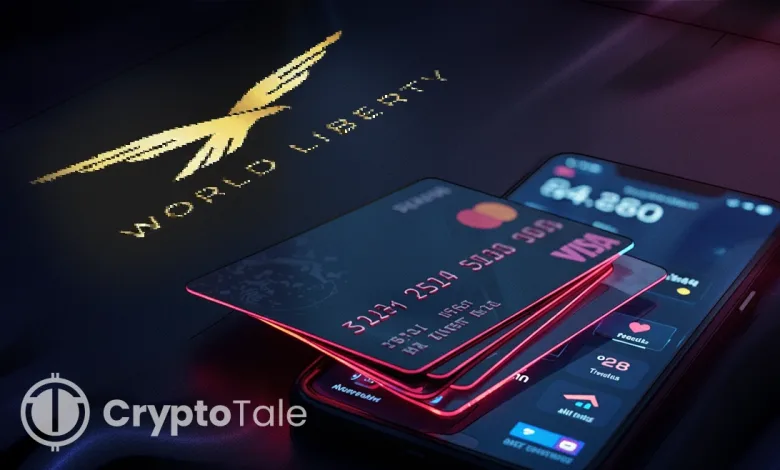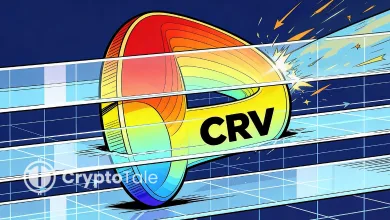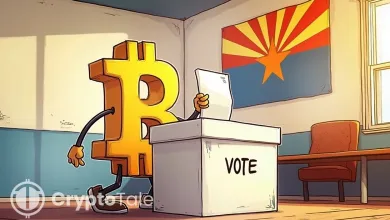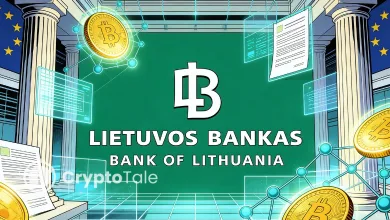World Liberty Financial to Launch Debit Card and Retail App

- WLFl will launch a debit card linked to USD1 with Apple Pay integration very soon.
- The project will release a retail app that mixes payments and trading in one platform.
- WLFI will not create its own blockchain and will continue with a chain-neutral strategy.
Taking an innovative step, World Liberty Financial co-founder Zak Folkman announced that they would soon launch a debit card and retail application. Sharing more insights at the recently concluded Korea Blockchain Week 2025, Folkman stated that users could link their USD1 to Apple Pay, enhancing a seamless payment. Further, Folkman added that while the debit card and app rollout is close, the project has no intention of creating its own blockchain.
Debit Card and Retail App Plans
Folkman stated that the debit card is designed to work seamlessly with Apple Pay. “This allows users to attach their USD1 and their World Liberty Financial app right into their Apple Pay,” he said. “Not today, but it’s coming very soon.” The retail application will follow the card launch, offering both peer-to-peer payments and trading functions. Folkman described the app as “Venmo meets Robinhood,” combining Web2-style transfers with investment tools.
By incorporating a debit card and retail app, World Liberty Financial positions itself as a practical entry point for stablecoin adoption. The company is steering away from building Layer-1 networks and is focused on user products.
Chain-Agnostic Strategy and Market Expansion
Folkman rejected the idea of developing a dedicated blockchain for WLF. “We will never put out a World Liberty Financial chain,” he said. He explained that the company’s role is not to build chains or exchanges but to remain chain-agnostic and accessible across platforms.
This stance was in line with WLF’s expansion strategy. Earlier this month, WLF minted 100 million USD1 tokens on Solana, further polishing its multi-chain approach. Prior listings and governance integrations immediately followed this to widen the project’s influence across ecosystems.
In just a few months, the USD1 stablecoin attained a market valuation of $3 billion. Indeed, this has fast become one of the very few fastest-growing stablecoin markets within the U.S. These developments suggest that the company prefers adoption across existing networks instead of piling in on any new infrastructure.
Related: WLFI and BONKFUN Announce USD1 Trading Pairs on Solana
Governance, Partnerships, and Long-Term Outlook
The project has also proposed a buyback-and-burn program to reduce supply during downturns. Governance support was overwhelming, with more than 99% of the votes approving the proposal. This reflects the company’s attempts to stabilize the token during times of volatility.
Folkman said that the WLFI token has had a 37% price drop since launch. He added that there remains confidence in the project’s long-term growth and utility. The attention now is on developing the product suite surrounding the USD1 value and ensuring future relevance.
Also, WLF entered into a memorandum of understanding with Bithumb, a South Korean exchange, to explore future collaboration and bolster market confidence in Asia. This partnership could provide expanded distribution and new use cases for USD1 in one of the most active digital asset markets.
Folkman reinforced that World Liberty Financial’s vision is measured in decades rather than months or years. “We’re not in this to run a sprint; this truly is a marathon,” he said. He added that the company aims to build products with durability and long-term impact. As the crypto industry shifts focus from trading toward consumer utility, can stablecoins like USD1 become mainstream financial tools for daily use?




